The digital era places companies under an ocean of data on all corners of operations. The data explosion, which can be customer-related, sales-related, social media-related, or IoT, has been a two-edged sword to businesses. On the one hand, data carries with it the possibility of opening up valuable knowledge that can be used to spur growth and efficiency. Processing and analyzing lots of data to derive something of meaningful significance the other hand is an appalling task.
That is why data analytics platforms powered by artificial intelligence might help. Clued by artificial intelligence (AI), companies not only can analyze large quantities of data much more expeditiously, but also can accomplish more complex insights and more precise predictive models previously infeasible or sensibly cumbersome to create.
Understanding AI-Powered Data Analytics
Artificial intelligence enabled data analytics are those that combine the concepts of artificial intelligence e.g., machine learning (ML), natural language processing (NLP), and predictive analytics with conventional data analytics. The platform is machine powered, and through the algorithms, it can quickly analyze a large amount of data, reveal patterns, and therefore, yield insights, without always having to be under a human intervention.
Unlike the classic data analytics model, which usually implies pre-programmed rules and manual operations, the AI-based analytics is capable of learning the data, adjusting itself based on such trends, and basing the decisions on the data received. The change enables companies to make more precise forecasts, automate decision-making, and more individual customer experience.
The Benefits of AI-Powered Data Analytics for Businesses
The use of AI-stationed data analytics platforms will have a variety of benefits to businesses, including increasing operational efficiency and offering more in-depth insights. Some of the most important advantages of data analytics with the use of AI are listed below:
Accelerated Decision-Making
The process of data handling and analysis is also one of the greatest opportunities of AI-enhanced analytics as it can be extremely fast. Conventional analytical processes can be quite time consuming, particularly when one is dealing with huge data. AI algorithms, however, can work with data, giving business in real-time insights, and recommendations hence close to real-time.
Decision-makers will be able to fast respond to the information they get and this makes businesses more agile. The capability to make fast decisions so that they can keep up with the rapidly changing customer behaviors is very crucial, especially in such a fast-paced industry as e-commerce.
Predictive Analytics for Smarter Planning
Those platforms powered by artificial intelligence are good at predictive analysis. Through historical data analysis, AI can determine patterns and trends which enable the businesses to predict the future. The ability can be particularly useful to companies that would like to predict the market trends, customer needs, or risks.
As an example, AI can assist to predict customers churn, optimize inventory or future demand. These forecasted models assist businesses to make proactive and data oriented decisions, instead of merely responding to the changes that come to way.
Improved Accuracy and Reduced Human Error
Human error is a necessary part of working with large and multifaceted sets of data with a manual data analysis. This risk can be reduced with the help of AI-powered platforms that automate the process of data processing and analysis. More accurate results are obtained with AI tools because they can identify outliers, inconsistencies and patterns where human beings would not notice.
In addition, the more the AI models are exposed to data; the more they become more precise.
Enhanced Personalization
Customization is the main concept of enhancing customer involvement and retention. Customer data is used by AI platforms to give a customized experience, suggestions and interactions. By way of example, AI is used in the e-commerce field, where it makes suggestions about items based on past buying habits.
Using AI-driven data analytics, even businesses have been able to localize their marketing campaigns, content, and also product recommendations to the distinct behavior of every customer, resulting in more satisfaction and subsequent conversion.
Scalability and Efficiency
The more your business expands, the more your data increases. Analytics platforms built with AI are scalable according to your business. The big data volumes can be processed on AI platforms in comparison with traditional methods which may need greater human resources with increase in data volumes.
Through automation of repetitive, tedious tasks like data cleaning, processing, and reporting, the AI gives businesses the opportunity to allocate capital on high value activities. This very scalability will guarantee that companies will still reap the benefits of gaining value because data will also increase exponentially.
| Benefit | How AI Enhances Analytics | Impact on Business |
|---|---|---|
| Accelerated Decision-Making | Real-time data processing and analysis | Faster responses to market shifts and opportunities |
| Predictive Analytics | Machine learning algorithms forecast future outcomes | Proactive strategies and smarter planning |
| Improved Accuracy | Automation and continuous learning reduce human error | More precise decision-making |
| Enhanced Personalization | AI-driven insights for customized customer experiences | Higher customer satisfaction and engagement |
| Scalability | AI handles growing datasets efficiently | Efficient use of resources as the business grows |
How AI-Powered Data Analytics Improves Business Decision-Making
Not only do AI tools allow businesses to analyze their data more effectively, but they can also give businesses insight that can make smarter decisions. This is how the AI is changing the decision-making process of businesses:
Real-Time Data Analysis
In the modern world of fast development, business decisions should be taken within a small period of time but with references to the latest information. The data on platforms powered by AI is analyzed in real-time, and companies do not have to wait until they are updated manually.
For example, a retail company can use AI to analyze customer behavior on its website in real time, enabling them to adjust pricing, product placement, and promotional offers on the fly.
Automation of Routine Decisions
AI is used to facilitate in decision making by comparing patterns in data and also to make recommendations or decision without the input of human beings. Take an instance of AI in marketing whereby a tool helps to change ad targeting/budgets through a one-touch button with real-time performance data.
This automation makes operations fast, eliminates human bias and provides space to decision-makers to accomplish other purposes.
Advanced Forecasting
The use of AI will enable businesses to make more accurate predictions about the future due to well-developed forecasting strategies. As an example, an artificial intelligence system can be used by a manufacturing firm to anticipate when their machines should require repair, taking into consideration past data and usage frequency, thereby preventing an inconvenient surprise shutdown.
On the same note, sales teams would make use of the AI tools to project revenue using the previous performance trends which would help to project and budget more effectively.
Top AI-Powered Data Analytics Platforms for Businesses
The number of AI-driven data analytics platforms that use data to their potential is tremendous, and businesses can take advantage of them. These are some of the best platforms in the current market:
Google Cloud AI and Big Data Analytics
Google Cloud provides a set of AI services to provide business with the ability to process large masses of data and generate insights that can be used. Applications such as BigQuery can perform real-time analytics on large masses of data whereas Google AI tools and technologies ensure compatibility of machine learning models and automation in business.
IBM Watson Analytics
IBM Watson is probably the most popular AI data analytics platform. Watson uses NLP and machine learning to read both structured and unstructured data and give businesses the real-time insights. It is particularly helpful to business in healthcare, finance, and retail business.
Microsoft Power BI with AI Integration
Microsoft Power BI is the most popular business analytics application that supports AI capabilities in enabling businesses to derive business intelligence out of their data. The Power BI empowers business users of any proficiency with features such as predictive modeling, model auto data preparation, and natural language querying.
Alteryx
Alteryx is a bottoms up analytic tool that enables companies to cleanse, analyze and visualize data. Having AI functionalities built into its processes, Alteryx assists companies with understanding more about their data to make decisions using them.
DataRobot
| Platform | Key Features | Best For |
|---|---|---|
| Google Cloud AI | Real-time analytics, predictive models, machine learning | Big data processing and real-time insights |
| IBM Watson Analytics | NLP, machine learning, real-time insights | Healthcare, finance, retail |
| Microsoft Power BI | Data visualization, predictive analytics, AI integration | Business users, decision-making |
| Alteryx | End-to-end data analytics, machine learning | Data science, predictive analytics |
| DataRobot | Automated machine learning, predictive models | Enterprises, automated modeling |
Overcoming Challenges in Implementing AI-Powered Data Analytics
Although the introduction of AI-powered data analytics platforms has several advantages, introducing them may be complicated in some cases. Now we shall consider some widespread barriers and ways to surmount them:
Data Quality and Consistency
Challenge: AI algorithms can only be as good as the data that the algorithms are trained on. Insufficient or unreliable data may cause weak predictions and revelations. Businesses usually do not deal well with information silo, stale data as well as unstructured data.
Solution:
-
Data Cleaning and Preparation: Invest in data cleaning and preprocessing tools to ensure that data is accurate, complete, and consistent before feeding it into AI models. Platforms like Trifacta and Alteryx offer automated data wrangling capabilities.
-
Centralized Data Management: Use data lakes or warehouses (e.g., Google BigQuery, AWS Redshift) to consolidate data from different sources, ensuring that AI models have access to comprehensive, well-organized datasets.
Integration with Existing Systems
Challenge: Most existing businesses are already using multiple tools and platforms in their operations, and it may be challenging to integrate AI-driven analytics platform with other systems, which have already been deployed.
Solution:
-
API Integrations: Many AI tools offer APIs that allow easy integration with existing business applications like CRM, ERP, or marketing platforms. This makes it possible to embed AI-powered insights directly into existing workflows.
-
Cloud-Based Solutions: Cloud platforms like Google Cloud AI and Microsoft Azure offer a range of AI tools that seamlessly integrate with other cloud services and existing IT infrastructures.
Skills and Expertise
Challenge: AI and data analytics entails specific skill sets which include knowledge in machine learning, data science and data engineering. The firms can have problems securing or educating the relevant skilled workers.
Solution:
-
Upskilling Employees: Provide training programs in AI and data analytics for your teams. Many platforms, like Coursera and Udemy, offer courses on data science, machine learning, and AI.
-
Outsourcing Expertise: Partner with AI consulting firms or hire data scientists to bridge the skills gap and ensure that AI implementation is successful.
Data Privacy and Compliance
Challenge: As the attention to data privacy regulation like the GDPR grows, companies have to make sure that they make use of AI-based analytics platforms within the scope of the available data protection laws.
Solution:
-
Choose Compliant Platforms: When selecting AI tools, ensure they meet regulatory standards. Platforms like IBM Watson and AWS AI have built-in compliance features that help businesses handle sensitive data responsibly.
-
Data Encryption: Encrypt sensitive data both at rest and in transit to prevent unauthorized access.
How to Get the Most Out of AI-Powered Data Analytics Platforms
Having addressed some of the challenges, it is time to decide what the businesses can do to ensure that the investment on AI-based data analytics platform pays them off.
Define Clear Business Objectives
Businesses need to ask themselves what exactly they intend to accomplish with the use of data analytics before rolling out the AI-powered analytics. These may be as follows:
-
Improving customer satisfaction through personalized recommendations.
-
Increasing sales by predicting customer buying behavior.
-
Enhancing operational efficiency by optimizing resource allocation.
With the establishment of specific objectives, the effect of AI-based analytics can be gauged and overall business strategy can be aligned.
Foster Cross-Department Collaboration
AI-based analytics make a difference by influencing different departments such as marketing, sales, customer service, and operations. Designed to perfectly utilize such tools, the companies must promote the collaboration of their departments. Here’s how:
-
Data Sharing: Departments should share relevant data and insights to provide a holistic view of customer behavior, operations, and performance metrics.
-
Collaborative Decision-Making: AI can enhance decision-making by providing insights from different business units, enabling more informed, data-driven decisions.
Continuous Monitoring and Improvement
AI models and analytics tools should be constantly followed up and refined, to make them precise and topical. The business environment is dynamic and so is the customer preference. The way to have your AI tools in sync with changing needs is like this:
-
Model Retraining: Continuously retrain machine learning models to adapt to new data and trends.
-
Real-Time Dashboards: Use AI-powered tools to set up real-time dashboards that track KPIs and alert decision-makers when performance deviates from expected outcomes.
Leverage AI for Actionable Insights, Not Just Reports
Although AI can bring valuable tips, the true value can be seen when these tips are implemented. Creation of reports and visualizations is insufficient. The businesses ought to target:
-
Automated Decision-Making: Use AI to not only analyze data but also automate decisions based on predefined rules (e.g., automatically adjusting marketing spend based on ad performance).
-
Actionable Recommendations: AI-powered analytics platforms, such as Google Cloud AI and Power BI, don’t just provide raw data—they offer actionable insights and recommendations that businesses can implement immediately.
| Best Practice | How to Maximize AI Analytics | Impact on Business |
|---|---|---|
| Define Clear Objectives | Set measurable goals for AI-driven analytics | Align AI efforts with business strategy |
| Cross-Department Collaboration | Share data across teams and collaborate on insights | Holistic understanding of business needs |
| Continuous Monitoring | Regularly retrain models and fine-tune analytics tools | Keep AI models aligned with business goals |
| Actionable Insights | Use AI to automate decisions and provide actionable insights | Improve efficiency and make faster decisions |
Real-World Applications of AI-Powered Data Analytics in Business
Data analytics with AI already changes the landscape of industries throughout the board. The following are some practical applications of business success in using these tools:
E-Commerce and Retail
The e-commerce industry is one of the biggest users of AI platforms that analyze the customer actions, optimize the recommendations of products, and demand forecasting. As an illustration, Amazon employs recommendation engines that run on AI to provide customers with the product recommendations based on their purchasing, search, browse history. Such personalized recommendations lead to the increased sales and customer satisfaction.
Healthcare
Applications of AI in healthcare include creating a database of information about patients, forecasting epidemics, and personalizing treatment. IBM Watson Health is one of the AI-based analytics tools that help healthcare providers to analyze medical data to make better diagnoses.
Financial Services
Fraud detection, risk management, and algorithmic trading involve the use of AI-powered analytics platform in finance. DataRobot is useful in financial institutions that create predictive models that monitor fraudulent transactions in real time, to save both businesses and customers.
Manufacturing
AI helps manufacturing companies to improve production lines, predict demand and machinery maintenance. Siemens has adopted AI-based analytics to enhance efficiency in its operations and predictive analytics that minimise costs and downtimes.
| Industry | AI Applications in Data Analytics | Benefits |
|---|---|---|
| E-Commerce | Personalized recommendations, demand forecasting | Increased sales, customer satisfaction |
| Healthcare | Predictive analytics for patient care, disease prevention | Faster diagnoses, personalized treatment plans |
| Financial Services | Fraud detection, risk analysis, algorithmic trading | Reduced fraud, optimized investment strategies |
| Manufacturing | Production optimization, predictive maintenance | Reduced downtime, improved efficiency |
Summary
With the help of AI powered data analytics tools, businesses have been changed in the way they deal with data. Whether it is real-time decision-making and predictive insights, individual experiences with customers, and streamlining the flows of work, AI tools can help companies see their data in its full potential. The best ways to overcome all the challenges and make considered decisions that are data-supported is to embrace the best practices that can maximize the advantages of AI analytics.

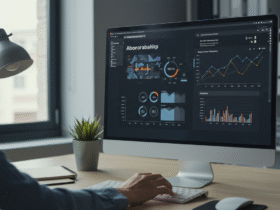
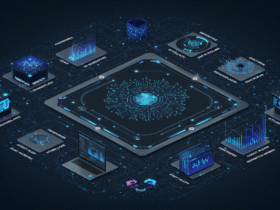
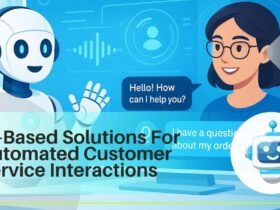





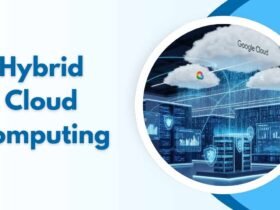



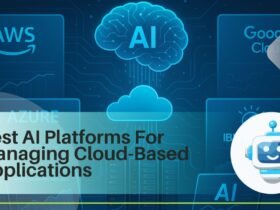

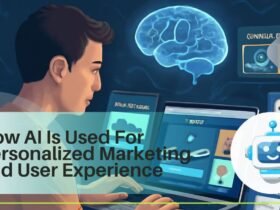
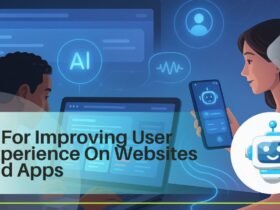
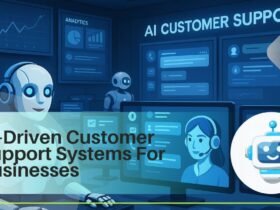

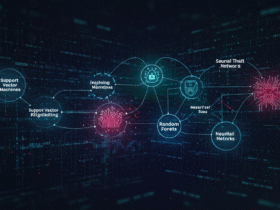




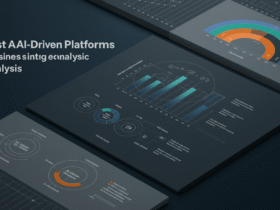




Leave a Reply